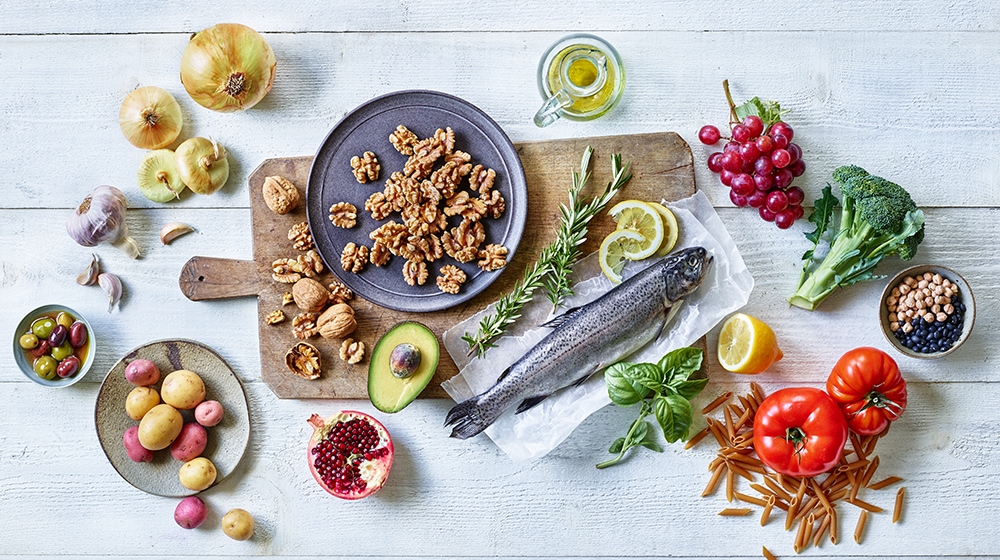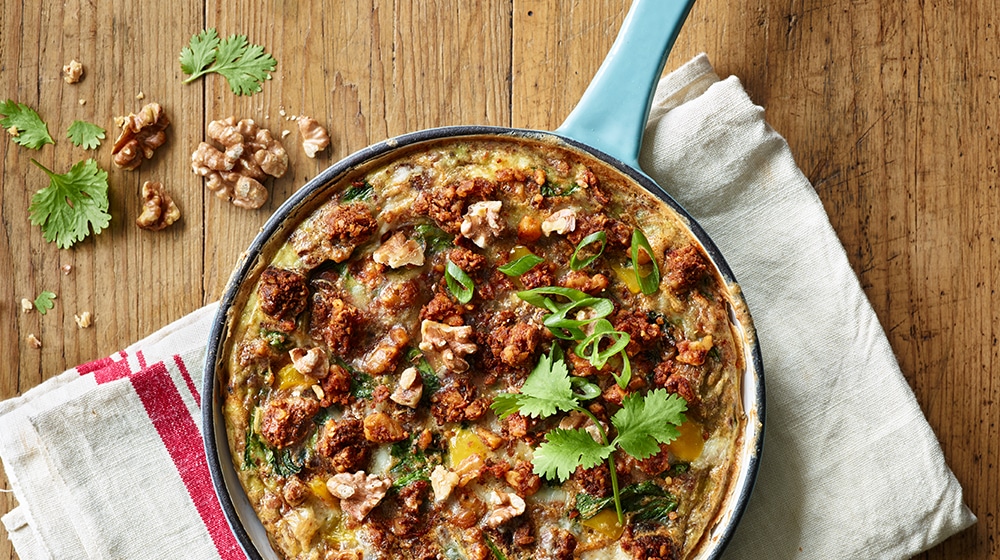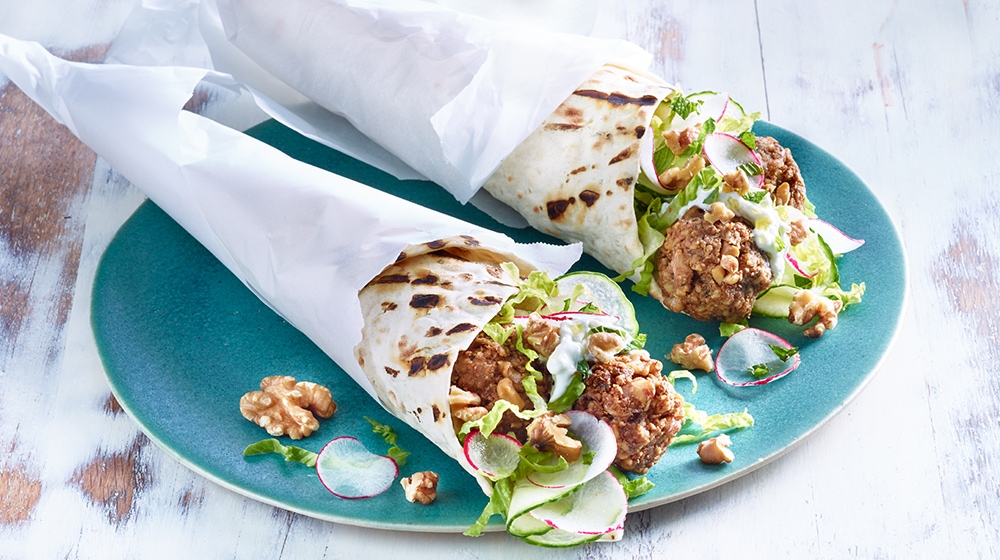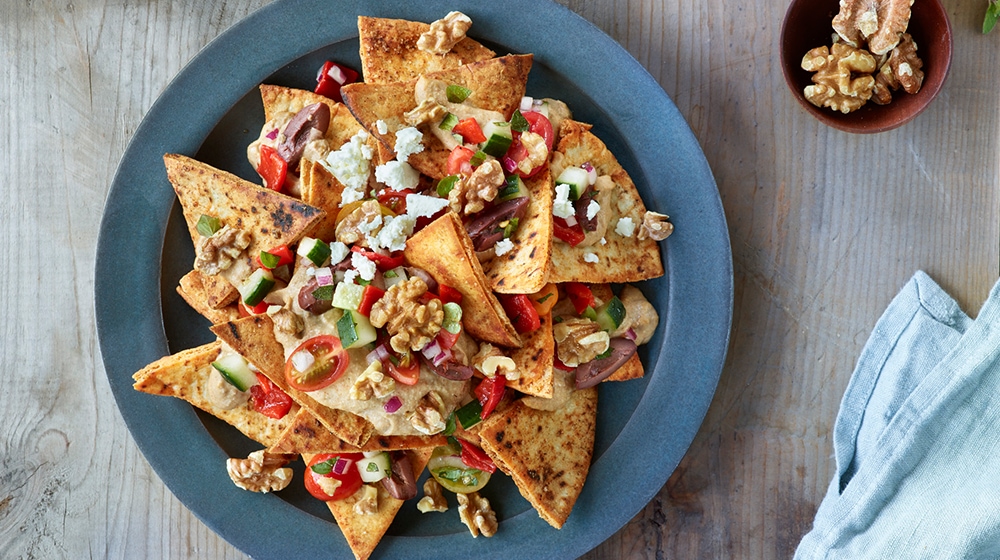You’ve probably heard of the Mediterranean diet. According to US News and World report it has been ranked at the top of the list consistently for the past several years. A Mediterranean diet is based on foods that are commonly eaten in countries that border the Mediterranean Sea, including Italy, Greece, Spain and Turkey.
The Mediterranean diet emphasizes more fruits and vegetables, nuts and seeds, grains, olive oil, moderate amounts of fish, poultry, eggs and wine, and limits the amount of red meat, processed meat, dairy and sweets. The U.S. 2020-2025 Dietary Guidelines for Americans recommends a Mediterranean-style eating pattern as one example of a healthy diet plan, primarily for its heart-health* benefits.
Fortunately, you can enjoy the benefits of this way of eating no matter where you live. And no, you don’t have to give up your favorite meals. Just a few small changes can transform any dish into a Mediterranean-style meal. And if you’re not sure how to get started, we’re here to help make things a little easier.

Embrace Plant-Forward Eating
The Mediterranean diet consists of more plant foods and less animal foods but also consists of a healthier lifestyle including taking time to enjoy meals. Produce options might be limited during the winter in many areas of the country but you can use frozen vegetables in stews and soups and dried fruit goes well with cereal, salads and for snacks. Fortunately, nuts, such as walnuts, aren’t limited by seasons so during the winter you can use them as much as you like. In fact, you can store air-tight packages of walnuts in the freezer so you can enjoy them all year long!
If you’d like to make this eating pattern fit your family, consider the following tips:
- Build meals around whole grains, fruits and vegetables – stews, casseroles, soups
- Slowly boost the amount of produce you use by adding more to current family favorite dishes
- Top grilled meat with vegetable salsas or try a fruit salsa on fish
- Add walnuts to hot cereal to enhance texture
- Change up your salads by adding dried fruit, walnuts, and feta or goat cheese to your mixed greens.
- Grill Brussels sprouts, cauliflower and broccoli for a change of taste and top with toasted nuts to boost enjoyment
Eat This, Not That: Make Your Meals More Mediterranean!
The Mediterranean Diet doesn’t require a complete overhaul of your diet. In fact, it’s simple to transform some of your favorite meals into nutritious, great-tasting Mediterranean dishes.
For Breakfast
Scrambled eggs and sausage (or bacon) is a weekend staple loved by many. Take your favorite eggs to the next level by creating a Spinach & Walnut Frittata—a simple dish that you can cook in the oven and looks impressive on the table. Along the Mediterranean, eggs and vegetables are beloved foods found at many meals. This Frittata brings them together with heart-healthy* walnuts, to make a yummy breakfast, lunch, brunch or even dinner! Serve with whole wheat toast topped with mashed avocado to truly complete the meal.
For Lunch
While turkey can be a calorie-conscious option for lunch, typical deli sandwiches pile huge amounts of meat and cheese on white bread, topped with a few hundred calories just from the mayo. Instead, try your sandwich on whole grain bread, with veggies and avocados—or even better, step lunch up a notch in nutrition and flavor with a Mediterranean-style California Walnuts Falafel with Tzatziki. Made of walnuts, garbanzo beans, garlic and fresh herbs, serve garnished on top of flatbread, or mix into a salad for a quick and delicious meal.
For Dinner
People in Italy usually refer to Spaghetti and Meatballs as something only eaten in America! Whatever its origins, as typically eaten, it’s a dish high in calories (almost 1,000), not leaving room for much else if you are aiming for the 2,000 calorie day recommended for most adults. Instead, remake Spaghetti and Meatballs into Spaghetti and Lentil Walnut “Meatballs”! This dish, with an enticing aroma, is a great representation of the Mediterranean diet. This plant-based version of meatballs uses lentils and walnuts as the base, plus it features lots of important whole plant foods (tomatoes, olive oil, olives, whole grain spaghetti, onion, garlic, and walnuts). It’s easy to make and full of flavor but lower in calories than the typical Spaghetti and Meatball dish.
For even more great recipe inspiration, visit our collection of Mediterranean Style recipes for more inspiration.
Snacks Get a Makeover too!
Anyone can put cheese and crackers on a plate. Instead, dazzle your family and friends with an Antipasto Platter, a starter many Mediterranean families offer family and guests alike. It’s easy to assemble this platter with roasted vegetables, walnut-stuffed dates and Muhammara Dip, served with whole grain pita chips or pita bread. And then, if you want to include cheese, once again look to the Mediterranean for inspiration and add cheeses such as Parmigiano-Reggiano, Manchego, feta, Halloumi and/or any great cheese that you love. We love this recipe for Marinated Goat Cheese With Roasted Grapes and Walnuts. For more snack inspiration visit our Mediterranean Style recipe collection.
Keep these tips on hand as you make the transition into the world of the Mediterranean diet. For more Mediterranean diet inspiration, click here!
*Supportive but not conclusive research shows that eating 1.5 ounces of walnuts per day, as part of a low saturated fat and low cholesterol diet, and not resulting in increased caloric intake may reduce the risk of coronary heart disease. U.S. Food and Drug Administration, March 2004. One ounce of walnuts provides 18g of total fat, 2.5g of monounsaturated fat, 13g of polyunsaturated fat, including 2.5g of alpha–linolenic acid — the plant-based omega–3.







